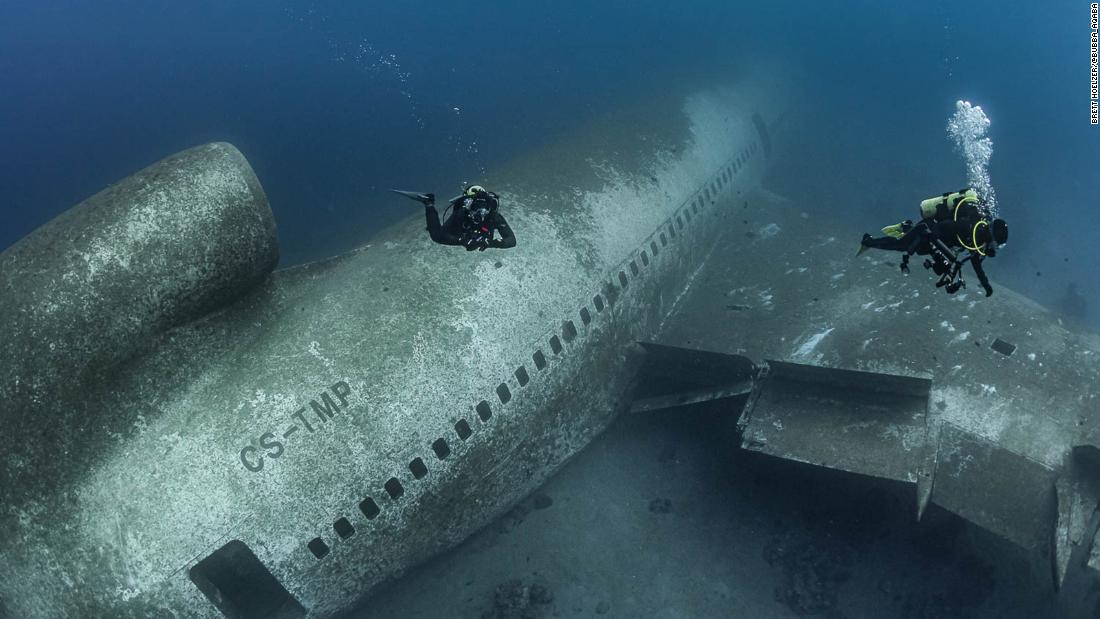(CNN) — Coming across this unexpected shape on the seabed is enough to take your breath away — so it’s a good job you’d probably have a tankful of breaths strapped to your back.
The venerable old Lockheed Martin L1011 Tristar airplane, with its three engines, mounted on wings and tail fin, would be a sight to behold in the air or on the ground, let alone deep beneath the surface of the Red Sea, among the fish and coral.
The abandoned jet, sunk in 2019 to create an artificial reef to encourage marine life, has been photographed by American underwater photographer Brett Holzer in a series of images that capture the eerie spectacle created by this aquatic airliner.

The three-engined Lockheed Martin Tristar flew for commercial airlines in the 1980s and 90s.
Brett Hoelzer/Deep Blue Dive Center
According to Holzer, the jet has now become a haven for wreck explorers and underwater photographers.
First registered in the 1980s and seeing service for several airlines including, according to Planespotters.net, Royal Jordanian, Portugal’s TAP Air and Sweden’s Novair before, after a final stint with Luzair, another Portuguese carrier, it was abandoned in the early 2000s.
After being parked and apparently forgotten for years at King Hussein International Airport near the shores of the Red Sea, the plane was sunk into Jordan’s Gulf of Aqaba with the aim of encouraging dive tourism and coral growth, according to Jordan News Agency Petra.
Holzer says it lies at a depth of 15 to 28 meters (50-92 feet), with the plane’s tail at the deepest end.
“The cockpit is the shallowest part of the wreck and faces the beach at about 13 meters,” Holzer told CNN Arabic.
Floating in an airplane

Divers can explore the cockpit and cabin.
Brett Hoelzer/Deep Blue Dive Center
Professional divers can enter the wreck through two doors behind the cockpit.
Inside the fuselage of the Tristar, middle row seats have been removed to permit better access for divers, but otherwise the jet is surprisingly well preserved.
“Scuba divers can go to the back to the last two exit doors, which are at a depth of 28 meters,” Holzer says. “Or they can exit from the middle doors, which are at a depth of about 20 meters.”
The cockpit, seat rows on both sides, toilets and galleys are still in place, allowing divers to float around a mostly intact commercial airliner, says the photographer.
After three years in the water, the plane’s wings now shelter numerous soft corals. The fuselage is surrounded by huge sponges populated by a variety of sea life.
“It is not unusual to find octopuses feeding near the coral heads,” says Holzer. Puffer fish can also be seen.
The real thrill, he says, is the uniqueness of exploring a passenger plane on the sea bed.
“This adventure gives a realistic diving experience inside a real commercial aircraft,” says Holzer.
However, Holzer stresses this adventure might not be for everyone.
Due to its depth, he says, divers will need to be fully qualified professionals. He also recommends making early reservations, as visiting requires a boat.
